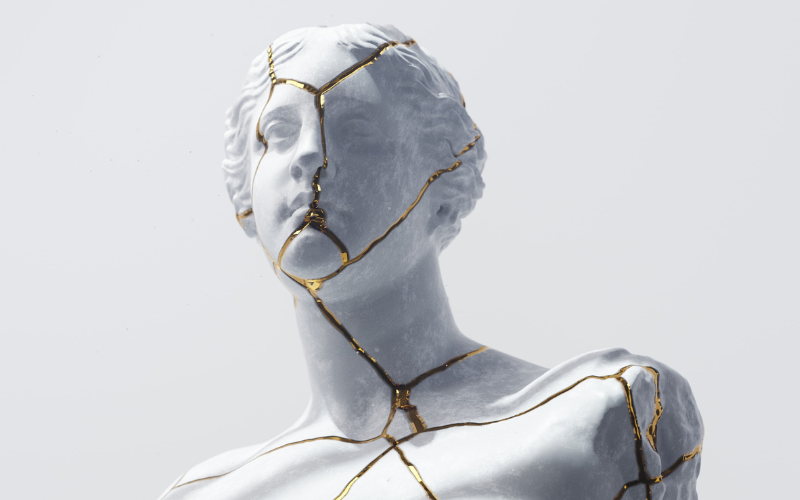Of all art forms, the sculpture is the most concerned about mass and space and how they interact.
The Latin, which means “to carve,” is the origin of sculpture. It can also be 3D printed, woven, or sewn.
At risk to state the obvious, sculpture collectors generally have lots of space. Two famous collectors, who have become legends in the art world, accumulated hundreds of works from some of the most sought-after sculptors of the 20th century while living in cramped apartments in New York City. They also made a modest living as civil servants.
Herbert and Dorothy Vogel were both mailmen and public librarians. They eventually acquired more than 4,000 pieces of art, many of which were conceptual or minimalist. They built their collection. They also required that all purchases must fit into a taxi. To the dismay of many galleries, the Vogels purchased art directly from the studio. They also paid artists in installments due to their middle-class status.
Many famous names were included in the Vogel collection: Pablo Picasso and Joseph Beuys; Nam June Paik, Sol LeWitt; John Chamberlain; Ursula von Rydingsvard; Tony Smith, Joel Shapiro, Tony Smith, and so forth. In 1992, the Vogels gave their entire collection to the National Gallery of Art.
They donated 2,500 works from their collection to 50 institutions in 50 states a few decades later. (In 2008, an excellent documentary about the couple was published. So, the Vogels prove that you only need a little space or even deep pockets to collect sculptures from artists you admire.
A Brief History of Sculpture
Primitive sculptures made of carved rock have been found dating back to the Stone Age (approx. 230,000-700,000 BCE). The most famous prehistoric sculpture is the carved fertility goddess, The Venus of Willendorf (25,000 BCE).
El Anatsui, an African artist, rose to prominence in the 2000s thanks to his remarkable works made entirely of recycled materials and found objects. These included thousands of bottle caps flattened into flattened shapes. Indian sculptor Subodh Gupta was also famous during this period with his sculptures, which used everyday items like milk bottles and bicycles.
Ai Weiwei was a dissident Chinese artist. He spent many years under house arrest. However, his large-scale sculptures also feature bicycles. His focus is often on Chinese authoritarian rule. For example, surveillance cameras made of marble and other sardonic artifacts. African-American artist Simone Leigh is the most highly-respected sculptor in the global art market. Her 2022 Venice Biennale Pavilion won him the Golden Lion award for the best national presentation. Leigh creates bronze, ceramic, and raffia sculptures that reflect her African ancestors’ traditions and nobility.
Buyer beware – This sculpture could kill you.
Collecting sculpture isn’t for the faint-hearted or those with limited budgets. It depends on the size and materials used; statues may need much care and maintenance over their lives.
Damien Hirst’s “The physical impossibility of death in the mind of someone living” is one of the most well-known contemporary sculptures. It’s made of a dead tiger Shark in formaldehyde. Larry Gagosian sold the piece to Mets owner Steve Cohen, a hedge funder. It was later reported that the shark was in disrepair and needed to be replaced.
In his work, Hirst used many animal carcasses to illustrate themes such as mortality and existentialism. However, these “bio-materials,” intended for temporary display, are not meant to be long-term. Hirst’s “Away From the Flock” is an example of a work that uses formaldehyde for preservation. Whenever the piece needs to be moved, an art handling team in full gas masks and hazmat suits is usually called in.
While outdoor sculptures are meant to be exposed to the elements and can quickly become victims to acts of god or the effects of climate change (flooding fires, hurricanes, floods, etc.), they can also be vulnerable to being damaged by the elements. An outdoor installation may require a concrete footing or leveling of some ground. Permits may be required for this. This adds time and money, so factoring this into your art budget is essential.
Indoor sculptures, which can vary in scale, weight, and other factors, may require strengthening the structure or reinforcing its foundation.
It can be dangerous to install heavy sculptures. In the 1970s, an art handler was killed when a Richard Serra sculpture fell upon him as it was installed at Minneapolis Walker Art Center. Two art installation workers died installing an Alexander Calder at Princeton University.
Another tragic tragedy was that artist Luis Jimenez was murdered while creating an enormous public artwork–a bucking bronco that graces the Denver International Airport’s entrance–when a part fell on him, cutting off an artery.
These are rare exceptions. Most sculptures do not kill people. Recognizing the work involved in installing any artwork you acquire is essential. Sculpture should be considered a severe art form.
Sculpture can be playful, fun, mysterious, and surprising. It is essential to consider the following things before you start collecting statues:
Some common (and not so common) sculpture materials
Here is a quick overview of some of the most commonly used materials in sculpture.
- Alabaster
- Alabaster is a soft stone used to make sculptures for hundreds of years. It is usually translucent and white. Because it is water-soluble, alabaster should never be placed outside. Also important to note: never use water to clean alabaster, “even a damp cloth can cause damage to the delicate stone.” Instead, use saliva or mineral spirits.
- Aluminium
- Aluminum is a popular metal for sculptures as it is lighter than other heavier metals and is, therefore, more affordable. Aluminum is resistant to corrosion which is crucial for outdoor sculptures. Aluminum is easily scratched, so it’s best to clean it with a soft cloth.
- Bronze
- Bronze is one of the most expensive and heavy metals used for sculpture. Its history dates back to 2500 BC. Bronze generally consists of at least two metals (copper, tin, and zinc). Bronze casting was used historically to create many tools, including weapons.
- The “lost wax” casting technique was mastered by the ancient Chinese, Greek, and Roman civilizations. This allowed for elaborate details and life-size statues. The natural oxidation of bronze will result in a patina. Artists may add patinas by using chemical applications to bronze sculptures. To reduce the process of patination, it is possible to wax coat bronze sculptures. This article contains more cleaning tips.
- Cement / Concrete
- Concrete is made up of cement and concrete. However, the two are often used interchangeably. Cement was invented in the mid-1800s. Contemporary and modern artists use adhesive for sculpture. It is fast to dry and easy to mold and cast. A professional restorer can glue your broken cement sculpture back in place if it breaks. Concrete can fill cracks, but the concrete must be the same color as your sculpture.
- Ceramic
- Ceramics is one of the oldest forms of fine art. It has been used for many purposes by ancient civilizations, including ceremonial and functional objects. Ceramics can easily be damaged and fragile. In Japan, a tradition known as kintsugi is a Japanese term that means “joining up with gold,” in which cracks in ceramic can be repaired using powdered gold or silver. For the Japanese, this technique represents their cultural philosophy that embraces–and celebrates–imperfection.
- Fabric and Textiles
- Soft sculptures made with fabric have a long history in art history. As a means of conservation and preservation, fabric sculptures might require careful pest control. Because fabric colors can fade, it is essential to keep soft sculptures out of direct sunlight.
- Found Objects
- This is where sculpture can be very bold, such as Hirst’s shark sculpture. Even a dead animal carcass is considered a “found object,” as are the bottles that El Anastui uses to create his massive assemblages. These sculptures can be dangerous because of the fragility of their materials. A plexi vitrine is recommended for protecting sculptures made from delicate fabrics.
- Glass
- Glass is fragile but can be used to make mammoth sculptures like Dale Chihuly’s unique installations. Glass was initially used to decorate churches (i.e., stained glasses) or grand interiors (i.e., Venetian lamps). However, contemporary and modern artists are continually innovating ways that Glass can be used in art. Glass sculptures should be brushed with a microfiber cloth and compressed air. Glass can be exposed to direct sunlight, unlike other materials.



